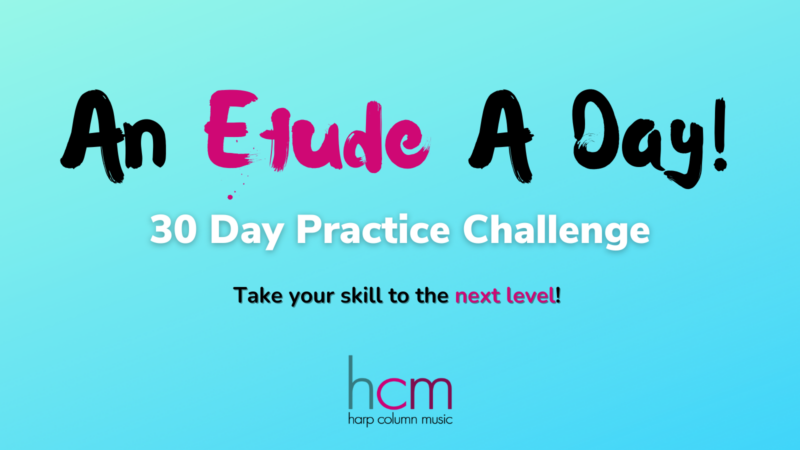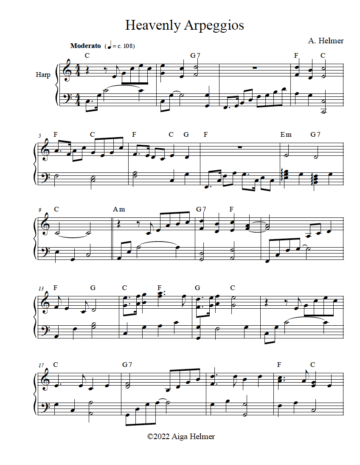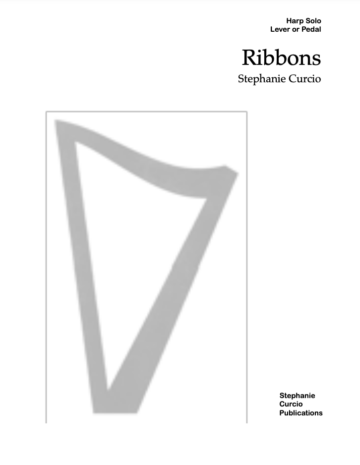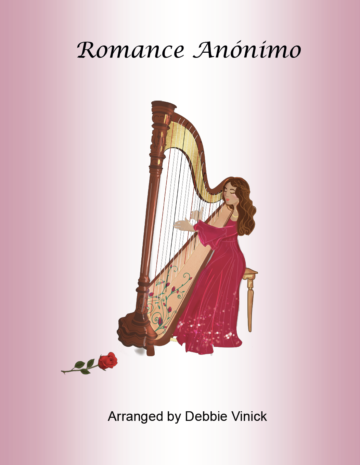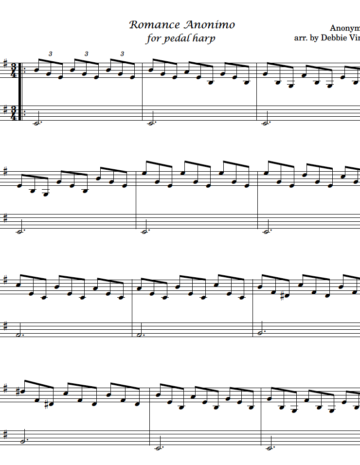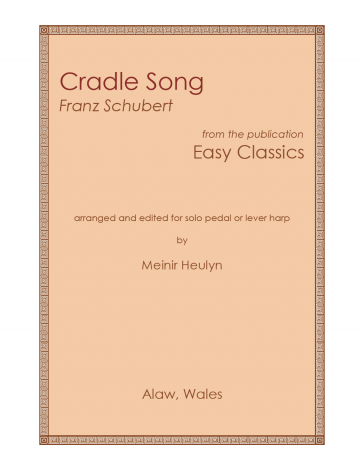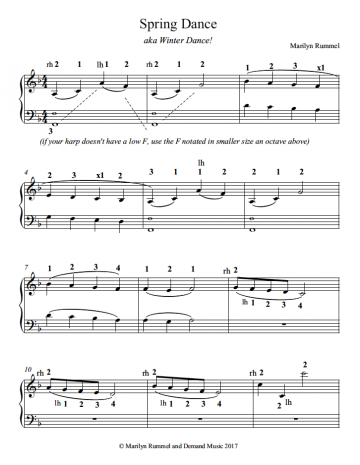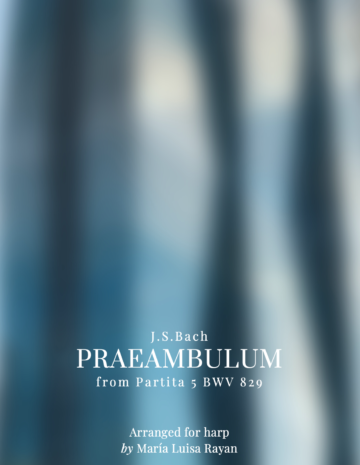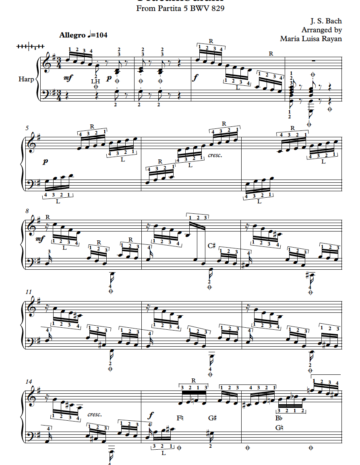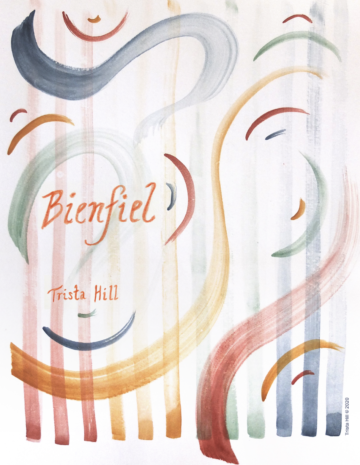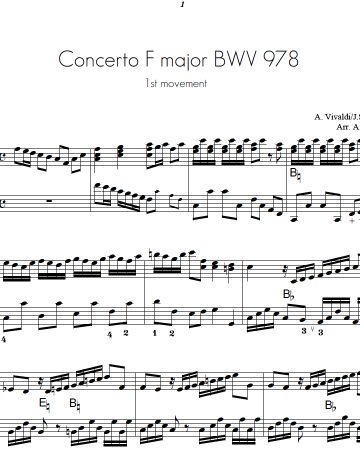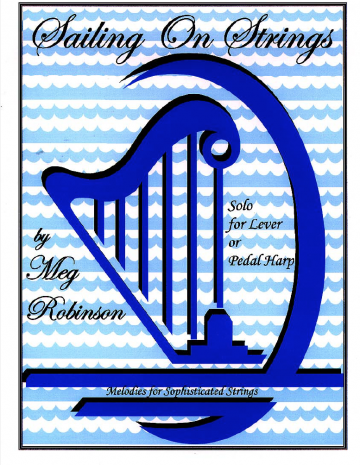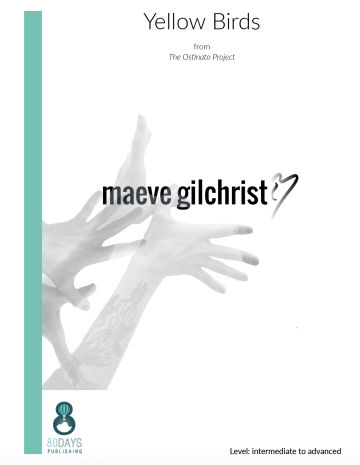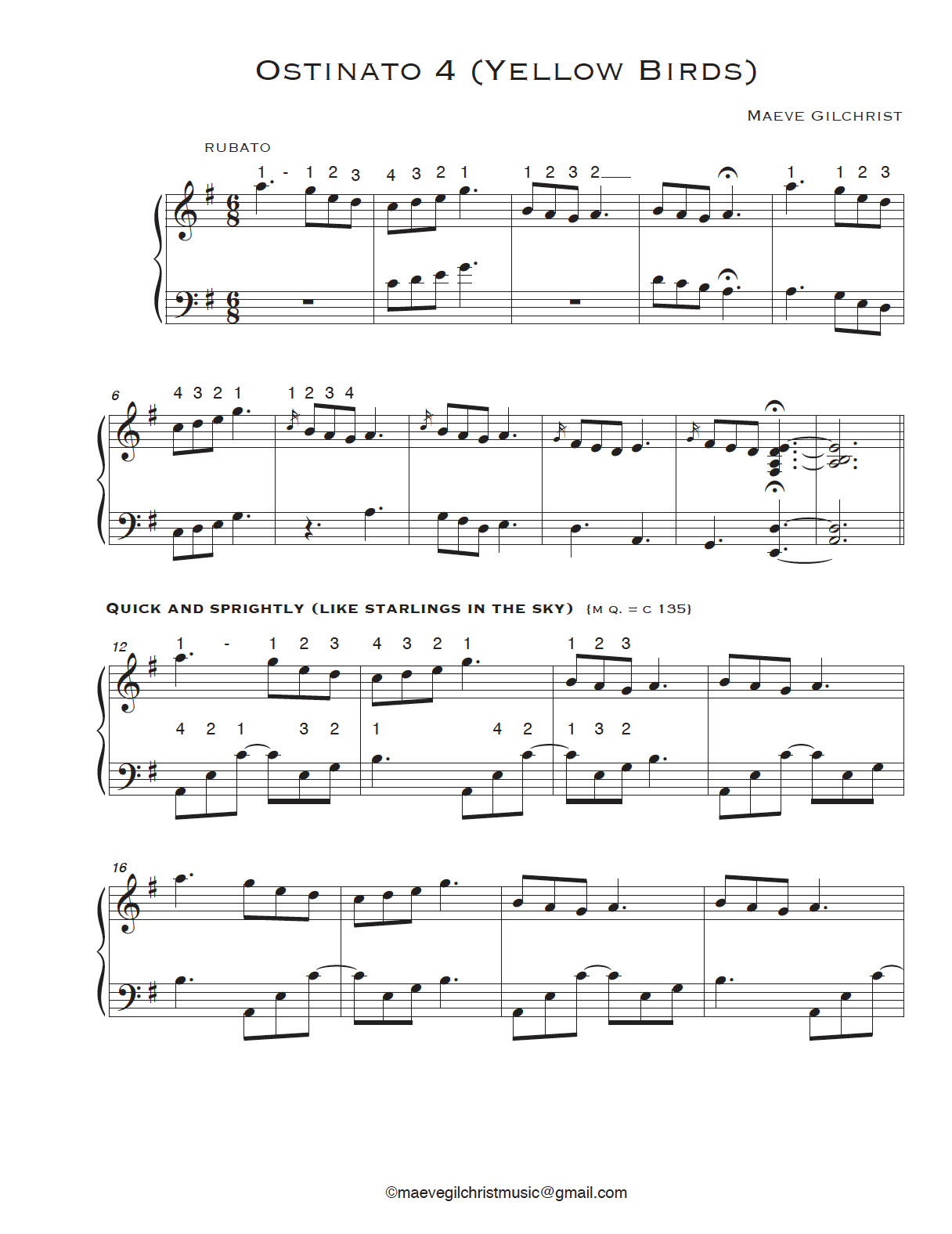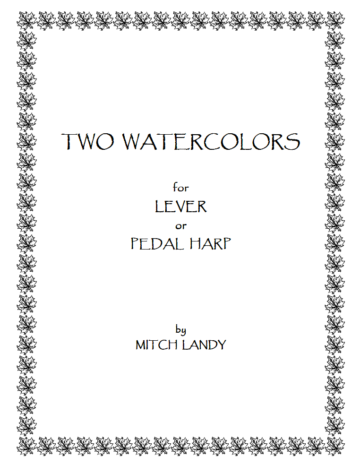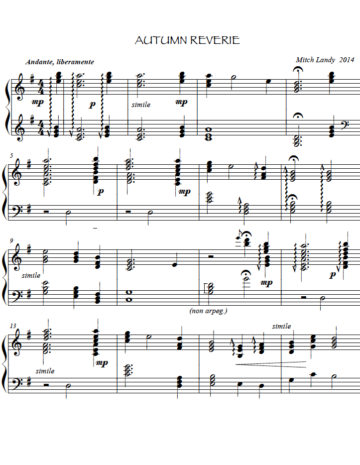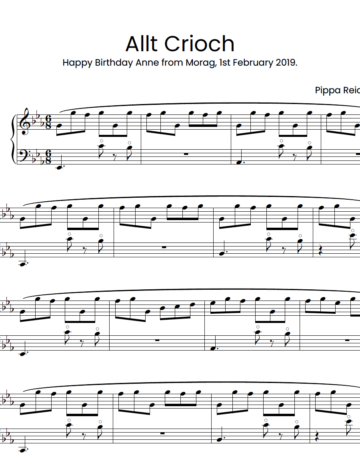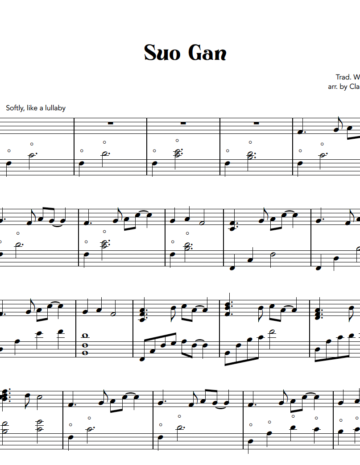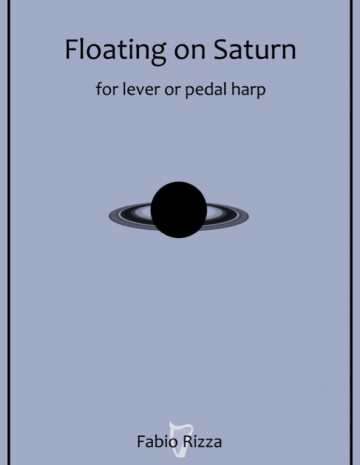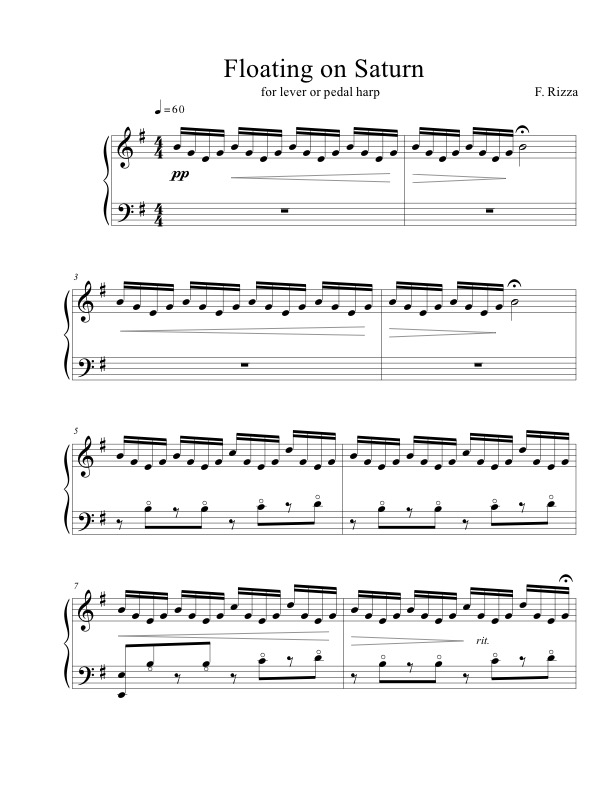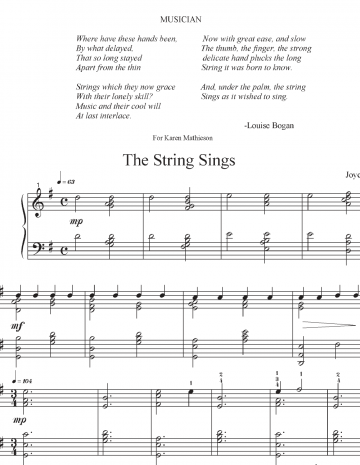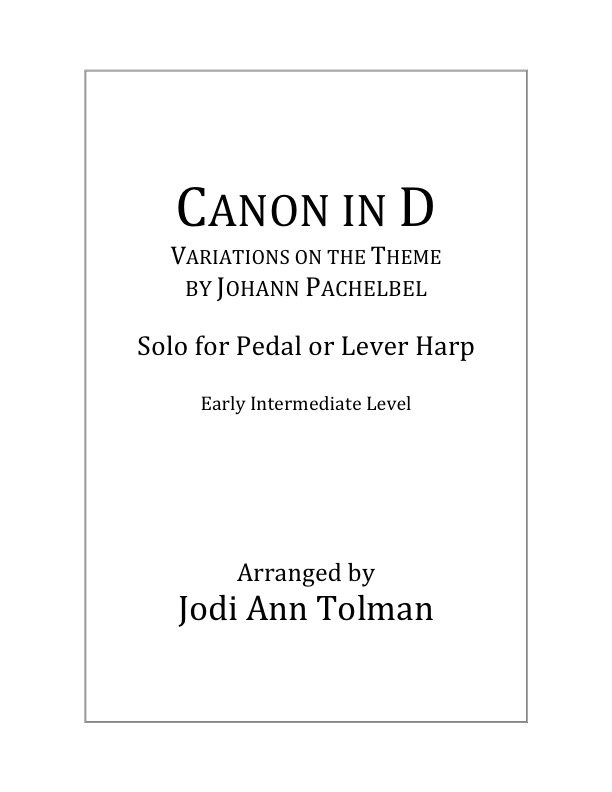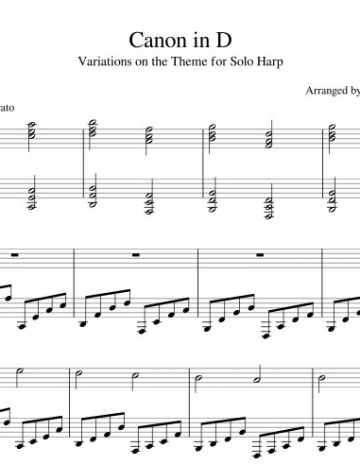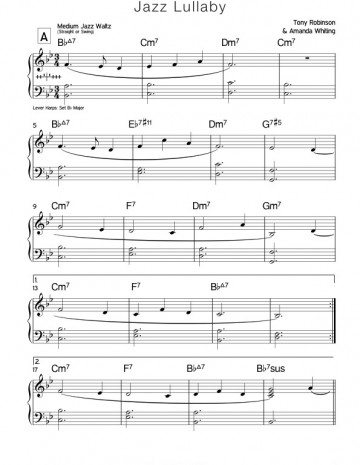Announcements
An Etude A Day–Take Your Skill To The Next Level
We hope you’re enjoying Harp Column’s annual 30 Day Practice Challenge! Each week as you harness new skills during the challenge, we will be recommending some Harp Column Music selections that will help take your skill to the next level.
(Titles marked with an * are playable on lever harp.)
Arpeggios
*Heavenly Arpeggios
by Aiga Helmer
It’s already in the title of this piece that you’ll get to play heavenly arpeggios. What more could you want? This sweet little piece by Aiga Helmer is perfect for student recitals or really any performance occasion.
*Ribbons
by Stephanie Curcio
If you’re a fan of the harp repertoire staple “The Little Fountain,” then you’ll love this shorter, crowd pleaser of a piece by Stephanie Curcio! The first part of this piece is based on descending 7th chord arpeggios in both hands, which return again at the end of the piece, and the middle section consists of a melodic interlude.
*Romance Anonimo
arr. Debbie Vinick
We cannot recommend this piece enough. It it gorgeous and intriguing and definitely sounds harder than it is. The cascading triplets in the right hand sure do add some drama!
*Cradle Song
arr. Meinir Heulyn
We have to make sure you take your left hand arpeggios to the next level, too. This classic piece by Mozart (arranged by Meinir Heulyn) is definitely an arpeggio workout for the left hand. It is a wonderfully gentle melody perfect for functions, ceremonies, receptions, and more!
*Ondulations à la Surface de l’eau
by Tamsin Dearnley
If you’re looking for a piece to work on crossover arpeggios (like the etude from Day 2 of our practice challenge), this Debussy-esque piece by Tamsin Dearnley is the one for you. It is absolutely stunning, romantic feeling, and fun to play.
Scales
*Spring Dance
by Marilyn Rummel
This beginner concert piece by Marilyn Rummel works on a myriad of skills. Not only does it help develop smooth arm movements, but it also works on counting skills and the beginning of crossed descending scales.
*Menuet
arr. Maria Luisa Rayan
This well-known melody arranged by Maria Luisa Rayan makes for a great beginner classical piece or introduction to Bach. It has scalular patterns that go both up and down.
Praeambulum from Partita 5
arr. Maria Luisa Rayan
For those looking for a bit more challenge, this famous number by Bach is also known as “Piece en Sol” and was arranged by Henriette Renie. This charming little gem, newly arranged by Maria Luisa Rayan, is chock-full of scalular patterns!
*Bienfiel
by Trista Hill
This fast-paced original composition by Trista Hill works on three practice challenge skills: arpeggios, scale patterns and syncopation in version 2.
Concerto in F Major
arr. Angela Klöhn
Eight note right-hand scales are plentiful in this piece by Bach. Angela Klöhn has arranged the first movement from Concerto in F, an upbeat and joyous piece perfect for weddings and other celebrations. Bonus: you can work on arpeggiated left-hand patterns!
Rhythm
*Kora
by Mitch Landy
This flowing, original work by Mitch Landy was actually written as an etude that works on different rhythmic patterns. It is reminiscent of West African music with repeated notes and cross rhythms, and is super intoxicating to listen to!
*Sailing on Strings
by Meg Robinson
On Day 13 of the challenge (Day 1 of rhythm), we worked on syncopation. This joyful tune by Meg Robinson will help take your syncopation to the next level. It includes left-hand syncopation along with melodic and rhythmic motifs that give a sailing effect.
*Watching The Begonias
by Amanda Whiting
If you enjoyed swing rhythm on Day 15 and want to practice more, check out this original, jazzy composition by Amanda Whiting. It is a lot of fun and very accessible!
*Ostinato 4
by Maeve Gilchrist
This sprightly piece by Scottish harpist and composer Maeve Gilchrist is sure to work your sense of rhythm as the piece alternates between 6/8 and 9/8 meters.
*Two Watercolors
by Mitch Landy
Day 16 of the challenge was all about rolled chords and timing your chords to end their last note right on the beat. “Autumn Reverie” by Mitch Landy works on chords that roll both upward AND downward, so you’ll get a lot of practice in this work. Bonus: You get a second piece, “Spring More,” with this collection.
Harmonics
*Allt Crioch
by Pippa Reid-Foster
Left-hand harmonics are used throughout this original composition by Pippa Reid-Foster to add to the piece’s ethereality. It is a gorgeous piece.
Suo Gan
arr. Claire Swanson
This traditional Welsh lullaby is expertly arranged here by Claire Swanson. The use of left-hand harmonics make this tune oh-so-delicate. There are both single and double left-hand harmonics used.
*Floating on Saturn
by Fabio Rizza
Fabio Rizza’s Floating on Saturn is such an interesting piece that creates a mystical atmosphere. Left-hand harmonics are used at the beginning and end to help set an air of mystery.
*Campanae Parisienses
arr. Meredith M. Mancini
Uses harmonics in both hands, as well as hands together at the same time.
Étude de Concert
arr. Elzbieta Szmyt
Featured on Day 24 of the challenge, this concert etude by Félix Godefroid is a beloved standard in the harp canon. Arranged by Elzbieta Szmyt, this beautiful edition comes marked with fingerings and pedal markings.
Theory
*The String Sings
by Joyce Rice
This piece by Joyce Rice works on a myriad of skills including rolled chords and extended harmonies. The lush harmonies include a fair amount of extended chords with 7ths and 9ths and the piece itself goes back and forth between major and minor. This change in chords will help your ear learn the difference!
*Snowflakes
by Hannah Haynes
Perfect for the winter ahead of us, this seasonal piece by Hannah Haynes is also a great way to learn some theory! It aids in learning triad inversions (like in Day 26), spread chords, and right-hand sixths. It also has some left-hand harmonics, which you’re already a pro at!
*Canon in D
arr. Jodi Ann Tolman
Possibly one of the most well-known chord progressions to exist! This piece by Pachelbel will help you understand chord progressions as the whole piece follows exactly one chord progression repeated every four bars. Jodi Ann Tolman’s arrangement is also very accessible to advanced beginner harpists.
*Jazz Lullaby
by Amanda Whiting
Seventh chords are quite possibly the most popular extended harmony used in music. This sweet and relaxing lullaby by Amanda Whiting uses 7th intervals in the left hand to add a jazzy color to this simple lullaby. She also provides chords for each measure to help you get more comfortable with new harmonies.
*Quick Chord Chart
by Sylvia Woods
Okay, this isn’t a piece to learn, but this chart by Sylvia Woods is so helpful! This concise chart includes the chord construction for every major, minor, augmented, diminished, suspended, 6th, minor 6th, dominant 7th, major 7th, minor 7th, 9th, and major 9th chord. It also includes intervals, inversions, parts of a chord, chord intervals, scales, modes and key signatures. I mean, WOW!




